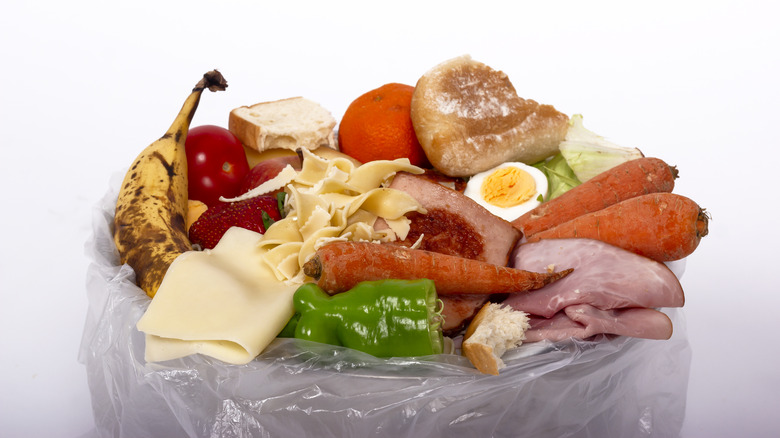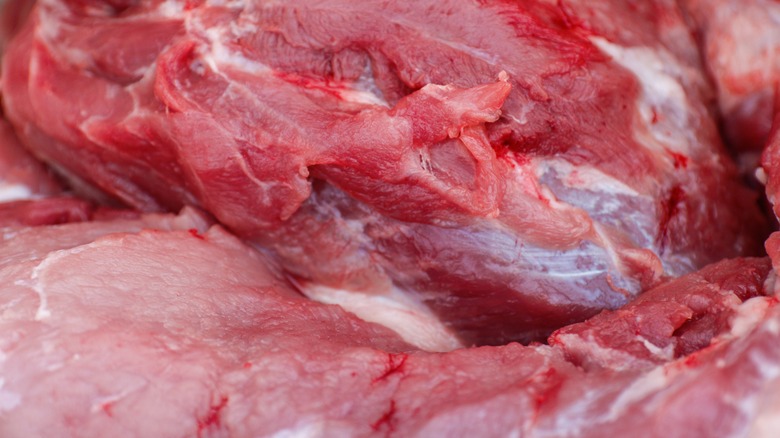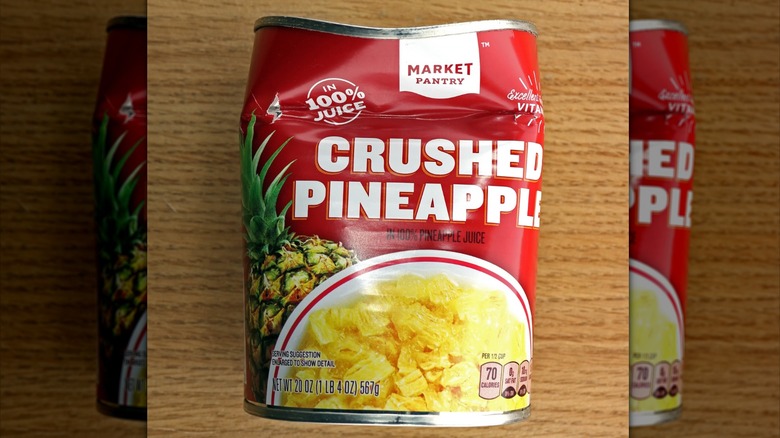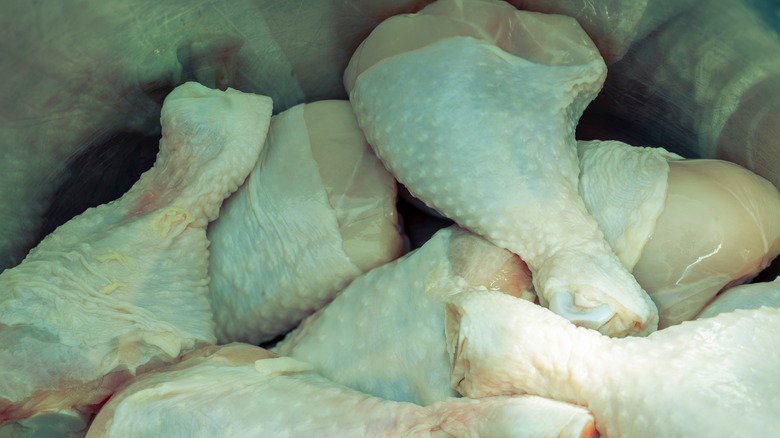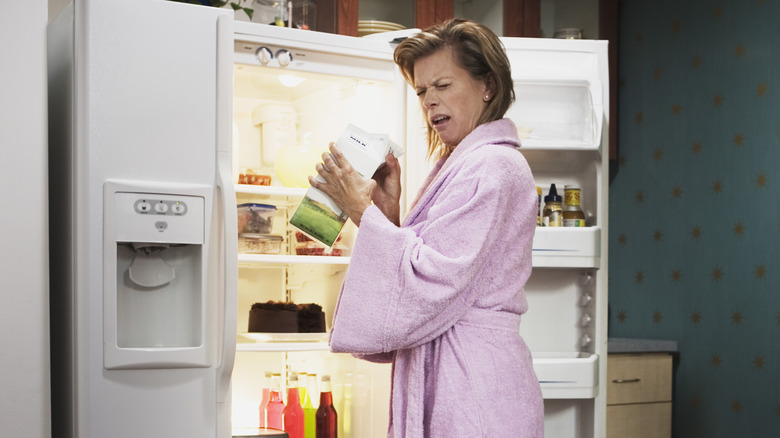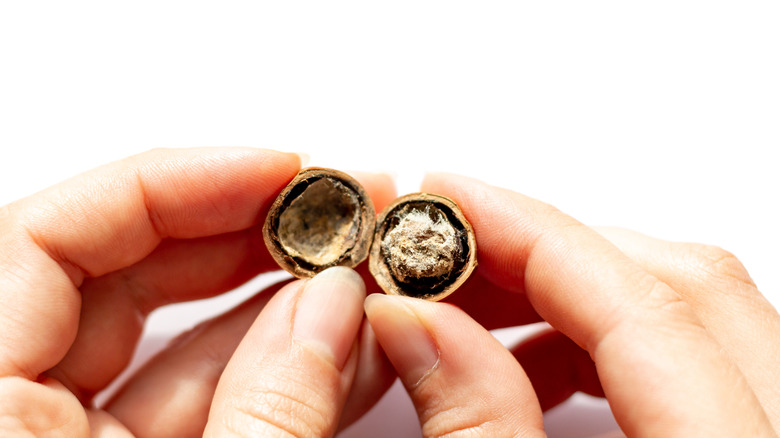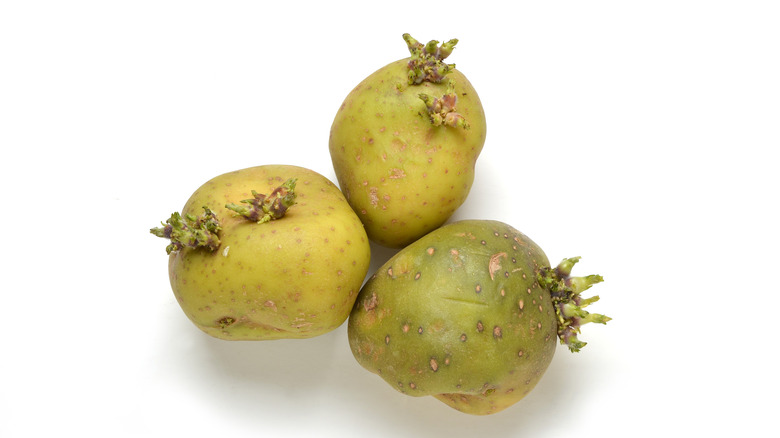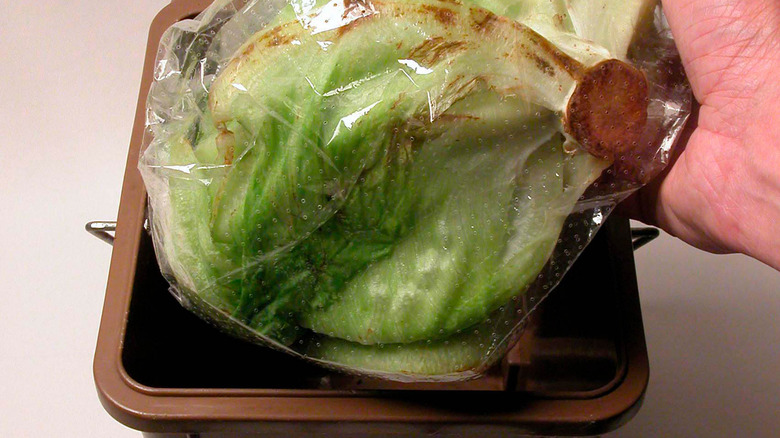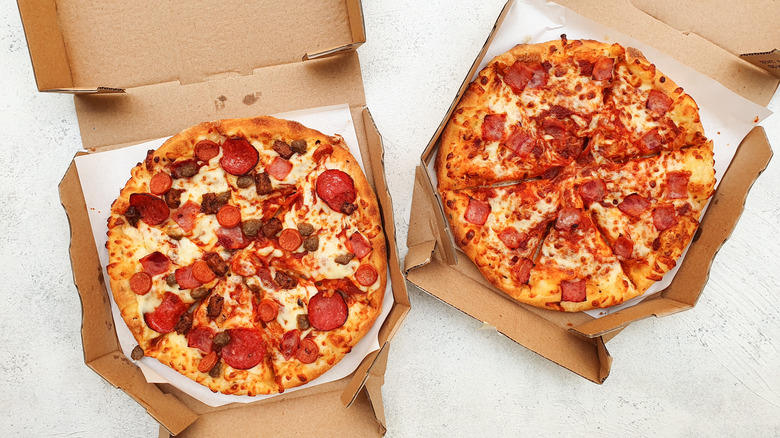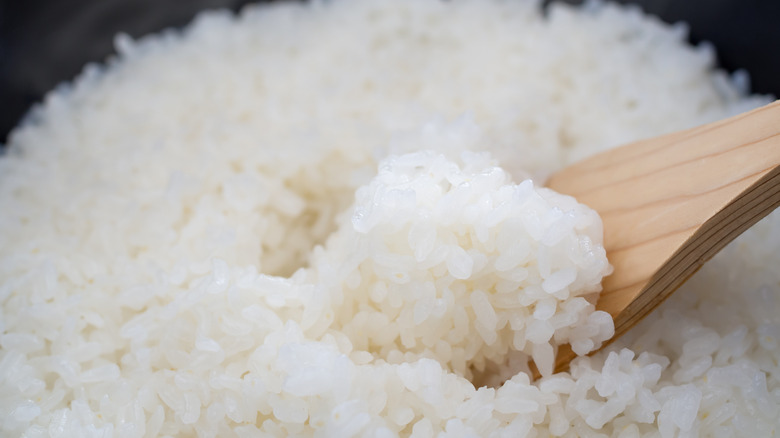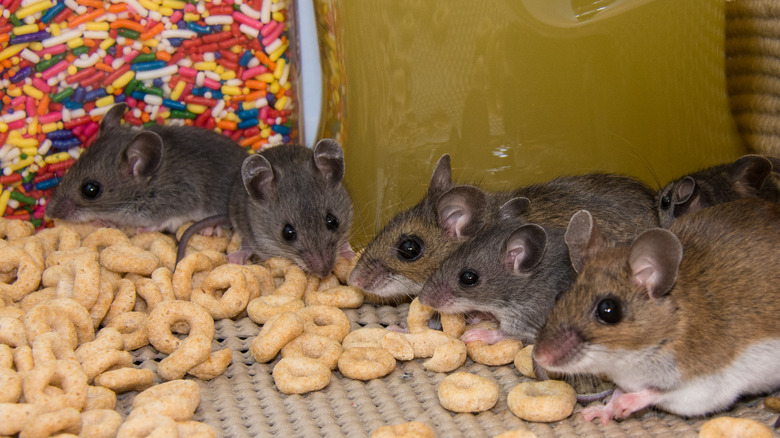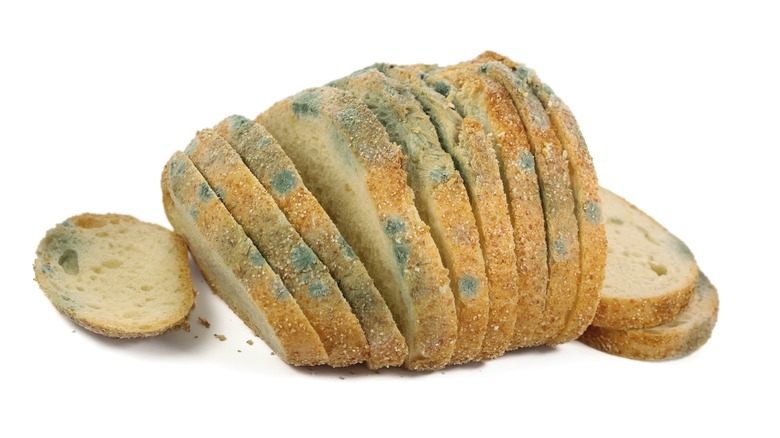12 Signs You Should Throw Out Your Food Before Eating It
To toss or not to toss? When it comes to food, this is a surprisingly controversial question. Savethefood.com suggests that 40% of the food sold in the US may be more likely to end up in a landfill than on a plate. Why such a shocking amount of waste? This may have to do with the fact that people tend to over-rely on the dates printed on food packaging, many of which actually have more to do with food freshness and quality than with safety.
Still, there's no denying that many foods, once they get past a certain point, can be unpleasant and downright dangerous to consume. So how can we tell when food is no longer safe to eat without erring on the side of overcaution and waste? The best way is to learn to trust our own senses instead of relying on what's printed on the package. Here are some tips to help you decide what foods are probably past saving, as well as a few helpful hints that may keep you from making the same food storage mistakes in the future.
Your food smells bad
One of the first and best ways to tell whether your food is safe to eat is to do like Toucan Sam and follow your nose. Does that juice stink? Pour it down the sink! Is your jelly smelly? Don't put it in your belly! Okay, we'll knock it off with the silly rhymes, but you get the picture. Any time food starts to give off an unusual aroma, this is a strong indicator that it has begun to spoil.
As to what causes the stink, TuftsNow says this may be due to microbial activity, and whatever those microbes are doing in your leftover meals or produce is not something you want going on in your body. Still, it's important to remember that while most food that smells "off" is unsafe to eat (this obviously excludes products like Limburger cheese or durian, items that are naturally malodorous even when fresh), not all rotten grub gives off an odor. That's why there's more than just this tip on our list.
It feels weird
Texture can also be a giveaway that food is starting to spoil. Unless we're working with a completely new ingredient, we generally have a pretty good idea of what our fruits, vegetables, and meat should feel like. So, if we pick something up and it feels too light, too heavy, too spongy, or otherwise odd, there may be an unpleasant surprise in store.
As Alton Brown told Today, "We all have the senses to know when food has gone bad." He advises using your sense of touch as well as those of sight and smell. (Your sense of taste can also be an indicator, but it's best not to let things get to that point.) If you feel something that seems, as Brown says, "slimy or sticky," this is a good indicator that you should get rid of it ASAP. If it's produce, you can compost it, but if it's meat or dairy, you'll need to take it right outside to the garbage can. Don't just let food sit in the kitchen trash since anything already spoiling may soon progress to super-nasty and stink up the whole house.
Canned foods have a major dent
Sometimes, supermarkets will have an end cap or side aisle where you can find marked-down items, including canned goods that have become dented. In most cases, these vessels and their contents are perfectly safe, but if you're a habitual dented can discount shopper, there are a few red flags you'll need to familiarize yourself with.
According to a guide published by Larimer County's Department of Health and Environment in Colorado, any cans leaking or perforated are unsafe, as are those where the seams have actually begun to separate. Even if no splitting has occurred, a dent across a side or end seam (where the top or bottom of the can is attached) has compromised that vessel's structural integrity to the point where whatever's inside may not be safe to eat. Other imperfections to watch out for include ones with sharp edges or where two dents meet to form a peak, as this also indicates major damage and possibly contaminated contents.
Your meat is the wrong color
When you bring meat home from the store, it's tempting to throw it in the refrigerator, so it stays ready to cook. However, unless you're absolutely sure you'll be consuming it within the next few days, remember that the freezer is your friend. The USDA assures us that frozen meat will never go bad, at least not to the point where it can cause illness, although the flavor may go off a bit if it's been in storage for a long time. Zoologist Russell Dale Guthrie, author of "Frozen Fauna of the Mammoth Steppe," once dined on woolly mammoth stew. The millennia-old meat, he said, had a "strong Pleistocene aroma," so you should probably try to eat your frozen food sometime before the next Ice Age.
Once the raw protein thaws out, though, the clock starts ticking. Color changes may indicate that it's starting to go bad, at least in certain cases. Gray steaks or brownish ground beef may still be safe to eat, as this discoloration could just mean that the meat has been exposed to oxygen. However, if the ground beef has gone brown all the way through instead of just on the surface, it's probably best not to eat it, and this is also the case for chicken that is no longer pink. You should also say no to any green meat that doesn't involve food coloring, no matter what Sam I Am may have to say on the subject.
The milk is thick and chunky
Once you open its carton or bottle, milk depreciates faster than a new car driven off the lot. Even though it's pasteurized and refrigerated, it will start to spoil soon after being exposed to airborne bacteria. If the dairy product is just a little bit off, you may not know it until you pour it into your coffee or bowl of Cheerios, but if it's got a powerful stink to it or comes out of its container all chunky and funky and yellow, you'll know right away that it's a day for dry cereal.
It's important to know that there are different degrees of spoiled milk. If the stuff is really stinky and nasty to the point where you gag when you open the carton, there's nothing you can do but get rid of it right away. On the other hand, if it's just a little bit sour, it may not be something you'd want to drink, but it should still be okay to use for baking. If you've got milk that's just on the edge of going bad and you're not quite sure what to make with it, your best bet is to freeze it until the next time you want to make biscuits, pancakes, or even homemade ricotta.
The nuts have an rancid odor
Nuts can be a great pantry staple, but not if you're just going to open up a bag, nibble on a few, then forget about them for months. While they are fairly shelf-stable, they'll eventually become rancid if kept at room temperature; rancidity happens when the fat in the nuts reacts with oxygen. Once these small morsels get to this point, they not only taste nasty but there's a chance they could also cause you some stomach discomfort. It's probably not the kind of thing that will result in a trip to the emergency room; still, the prospect of a few unpleasant hours in the bathroom is something best avoided.
The easiest way to tell if nuts have gone bad is to smell them. If you catch a whiff of paint or plastic or basically anything other than nuttiness, those morsels have sadly expired. However, sometimes the rancidity isn't detectable with your nose, so you may need to take a small nibble. If the nuts taste slightly stale, you can revive them by toasting them or using them for baking. If they are no longer good, though, your tastebuds will know. In this case, there's nothing you can do but throw them out and vow to keep your next bag of nuts in the refrigerator or even the freezer.
Your potatoes are green
Potatoes seem like benign vegetables, but they have a surprisingly dark side. According to UPI, back in 2013, the tuber actually wiped out an entire family in Russia -– it seems they'd been storing their potatoes in the basement. As they started to rot, they emitted a lethal gas. While this isn't likely to happen to you unless you have a large number of these in a small enclosed space, it's a lesson in never allowing these root vegetables to rot.
Potatoes that are stinky and squishy are obviously ready for the compost bin, but even before they get to this point, there's something else you should watch out for: a greenish cast to their skin. The greener the vegetable, the higher the level of solanine it contains, which, in large doses, could actually make you sick. Sure, you might have to eat a pound or more of green potatoes to become really ill (via The New York Times), but to avoid feeling even a little nauseous, it's best to cut out any small green spots you find in your tubers. If you find that the vegetable is going green all the way through, though, it's best just to write it off.
Your vegetables are leaking
Sometimes fruits and vegetables can get kind of mushy and still be safe to use — case in point: brown bananas, which everyone knows are best for baking. Even slightly soggy spinach is fine for cooking even when it's no longer suitable for salads – spinach is mostly water, so it doesn't take too long before it loses its crispness.
Most types of produce, however, are fit for nothing but the compost bin once they start turning liquidy. Registered dietitian Theresa Dvorak tells University of Utah Health that any fruits or vegetables that get "oozy," meaning they're starting to leak or drip, are past the point of no return, and there's really nothing you can do to re-use or repurpose them. While drippy daikon and leaky leeks probably won't make you seriously ill, it's better to be safe than sorry, plus they'd be pretty gross anyway.
The leftovers have been sitting out for a few hours
Leftover food, for the most part, should be okay in the refrigerator for a few days, while it will last in your freezer for approximately forever (or until the next power outage, whichever comes first). However, things can get dicey when planning a party, a buffet, or any large get-together that might involve a spread being left out at room temperature for several hours.
As a general rule of thumb, the Mayo Clinic says that food left on the counter should be fairly safe for up to two hours. However, if you're hosting an outdoor barbecue and temps are 90 degrees Fahrenheit or above (or even if you're indoors and the air conditioning is on the blink), then one hour should be the maximum time the spread stays out. If you need it to be out for longer than that, you'll need warming pans for the hot foods to keep them above 140 degrees. Cold eats can be kept on ice but must stay below 40 degrees. Temperatures between 40 and 140 degrees are what the clinic refers to as the "danger zone" as they allow bacteria to breed. So, if you've already messed up and left your fried chicken in the microwave overnight, it's time to toss it; otherwise, it might make you pretty ill.
Your cooked rice has been in the fridge too long
Dried white rice is sufficiently shelf-stable, so it never really expires, at least as long as it doesn't get wet or infested with creepy crawlies or otherwise contaminated. (Brown rice, which has more moisture, can start to go bad in just six months.) However, once the grains are cooked, you'd better plan to use them up as soon as possible. Prepared rice should be refrigerated right away since it can start to develop harmful bacteria within a few hours (via University of California ). Even when stored in the fridge, though, the prepared grains only last for a matter of days.
Additionally, according to the University of California, cooked rice should last for up to five days in the refrigerator, but only if it's been stored within an hour of having been cooked. To cool to a safe temperature before bacteria develop, it should also be stored in fairly shallow containers and packed no more than three inches deep. Leftover rice, if stored safely, can be reheated or used to make rice pudding or salad. Once the rice starts to smell a bit funny or develops a slimy texture or colored spots that might be mold, it is no longer safe and should be disposed of.
Critters have gotten into the food
If you have a mouse in the house, it can be kind of gross, but rodent infestations are actually quite common. As per the US Census Bureau, over 10% of occupied homes reported rat sightings in 2019-2020. If there were no sightings of the actual critters, there were at least signs they were in residence, including poop (yuck!) and chewed-on food packages. If some furry little beast has been nibbling at your cookies, crackers, and bags of flour, the only thing you can do is throw those packages out and invest in rodent-proof storage containers to keep the replacements in (plus maybe a few mouse traps).
You don't want to mess around with mice-contaminated food because these animals are notorious for spreading disease, including a very serious condition known as hantavirus pulmonary syndrome that the CDC reports being fatal in nearly 40% of cases. According to the FDA, all food items that have been in contact with rodents should be disposed of unless they're packed in sealed, undamaged cans or jars. However, even these must be sterilized by removing the labels and then immersing the vessels in boiling water for two minutes or bleach water (1 cup bleach to 5 gallons water) for 15 minutes to ensure they're germ-free.
You can see mold on the food
One of the most obvious signs of food going over to the yucky side is if you see spots of mold. Sure, there are certain edible molds, such as the ones used to make blue cheese, but these are more the exception than the rule; if you're not a professional cheesemaker, there's about a 0% chance that you're going to cultivate a gourmet delight from that blue-green yogurt in the back of your fridge.
There are certain cases where you can remove the mold from the item and salvage what remains — the USDA says it's okay to just cut the mold off of dry-cured hams, hard salamis, hard cheeses, and firm produce such as carrots or bell peppers. However, softer foods or basically any other kind of moldy product (including moldy blue cheese) is not safe to eat since even the parts with non-visible mold spores could still be contaminated, and there's a chance that eating moldy food could make you sick.
